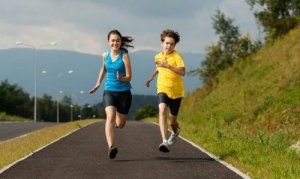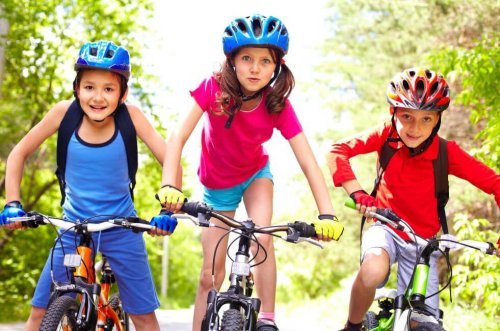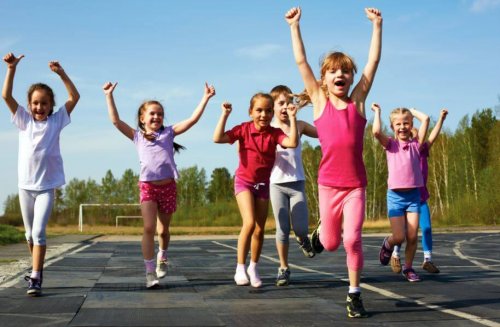The Benefits of Cardio for Kids

Our children, younger siblings, or nieces and nephews are a source of joy in our lives. They’re the epitome of love and innocence, so we want the best for them. Of course, that includes wanting them to be happy and healthy. As such, it’s vital to give them the best guidance and one way to do this is through cardio for kids.
When little ones participate in sports, it boosts their intelligence and metabolism. Children begin to form their personality and their outlook on the world between the ages of two and five years. So, it’s a good idea that they start doing activities where they need to use their bodies and their minds. For example, there’s dancing, karate, and swimming, among others.
A child is considered a child until they’re 12 years old. What’s more, children can start doing age-appropriate activities around three or four years of age. And, as they grow, so does their endurance and the intensity of their activities.
You can find cardio for kids in many sports they can perform them without becoming bored. This is important since kids should do sports that will entertain them.
Benefits of cardio for kids
Cardio for kids offers many benefits and we’ll look at which benefits these are below.

Helps them be happier
Children should be able to experience activities that make them laugh and feel comfortable with themselves. Doing cardio releases endorphins, a hormone that gives the brain a feeling of fulfillment and tranquility. Any activity that involves aerobic exercise, such as Zumba, flamenco, or ballet can improve a child’s mood.
Improved fitness
Of course, there are different metabolisms and every child is different. In other words, there are those who like to play often and move around all day and others who are calmer. Doing sports that involve cardio is a perfect way for kids to use their energy and develop.
Indeed, children are always growing which is why they should follow the best lifestyle possible. If a child is inactive and doesn’t eat well, they’re at a higher risk of suffering from diabetes, childhood obesity, and high blood pressure.
Cardio for kids promotes lower fat levels, muscle oxygenation, and enhanced breathing capacity.
As such, physical activity not only benefits a child’s overall life. Rather, it prevents them from having a disease related to an inactive lifestyle during their childhood and in their adult life.
Read more: 8 Excellent Benefits for Your Body when Practicing Zumba
Psychomotor development
Psychomotricity is the combination of movement, emotion, knowledge, and interaction with one’s environment. Much of the way in which a child develops their psychomotor system depends on the activities they perform. The situations children face will contribute to their overall psychomotor development.

Many sports and activities involve cardio such as running, cycling, dancing, and jumping on a trampoline. So, by performing these activities, a child will grow. What’s more, they’ll be better able to connect the dots between what they feel, know, and how they move. The end result is great for a child’s brain, personality, and resilience.
Want to know more?: The Benefits of Biking To Work
Security and interaction
While playing a sport, kids interact and socialize with other children with shared interests. As a result, they learn to work as a team and work together to reach a goal. It also bolsters their self-confidence which boosts their self-esteem. This, in turn, helps them to be happy with themselves.
Sports and related activities often mean that children have to work to overcome a hurdle or to reach a goal. Children will make an effort to kick a ball, jump higher, or turn the right way. What’s more, it stimulates their ability to face things and, in doing so, they feel rewarded by improving what they do.
Kids deserve to enjoy these benefits; this way, they’ll be happy, smart and feel fulfilled. Further, it’s even better if an adult can guide and support them to improve every day. And finally, a healthy child is a happy child!
Our children, younger siblings, or nieces and nephews are a source of joy in our lives. They’re the epitome of love and innocence, so we want the best for them. Of course, that includes wanting them to be happy and healthy. As such, it’s vital to give them the best guidance and one way to do this is through cardio for kids.
When little ones participate in sports, it boosts their intelligence and metabolism. Children begin to form their personality and their outlook on the world between the ages of two and five years. So, it’s a good idea that they start doing activities where they need to use their bodies and their minds. For example, there’s dancing, karate, and swimming, among others.
A child is considered a child until they’re 12 years old. What’s more, children can start doing age-appropriate activities around three or four years of age. And, as they grow, so does their endurance and the intensity of their activities.
You can find cardio for kids in many sports they can perform them without becoming bored. This is important since kids should do sports that will entertain them.
Benefits of cardio for kids
Cardio for kids offers many benefits and we’ll look at which benefits these are below.

Helps them be happier
Children should be able to experience activities that make them laugh and feel comfortable with themselves. Doing cardio releases endorphins, a hormone that gives the brain a feeling of fulfillment and tranquility. Any activity that involves aerobic exercise, such as Zumba, flamenco, or ballet can improve a child’s mood.
Improved fitness
Of course, there are different metabolisms and every child is different. In other words, there are those who like to play often and move around all day and others who are calmer. Doing sports that involve cardio is a perfect way for kids to use their energy and develop.
Indeed, children are always growing which is why they should follow the best lifestyle possible. If a child is inactive and doesn’t eat well, they’re at a higher risk of suffering from diabetes, childhood obesity, and high blood pressure.
Cardio for kids promotes lower fat levels, muscle oxygenation, and enhanced breathing capacity.
As such, physical activity not only benefits a child’s overall life. Rather, it prevents them from having a disease related to an inactive lifestyle during their childhood and in their adult life.
Read more: 8 Excellent Benefits for Your Body when Practicing Zumba
Psychomotor development
Psychomotricity is the combination of movement, emotion, knowledge, and interaction with one’s environment. Much of the way in which a child develops their psychomotor system depends on the activities they perform. The situations children face will contribute to their overall psychomotor development.

Many sports and activities involve cardio such as running, cycling, dancing, and jumping on a trampoline. So, by performing these activities, a child will grow. What’s more, they’ll be better able to connect the dots between what they feel, know, and how they move. The end result is great for a child’s brain, personality, and resilience.
Want to know more?: The Benefits of Biking To Work
Security and interaction
While playing a sport, kids interact and socialize with other children with shared interests. As a result, they learn to work as a team and work together to reach a goal. It also bolsters their self-confidence which boosts their self-esteem. This, in turn, helps them to be happy with themselves.
Sports and related activities often mean that children have to work to overcome a hurdle or to reach a goal. Children will make an effort to kick a ball, jump higher, or turn the right way. What’s more, it stimulates their ability to face things and, in doing so, they feel rewarded by improving what they do.
Kids deserve to enjoy these benefits; this way, they’ll be happy, smart and feel fulfilled. Further, it’s even better if an adult can guide and support them to improve every day. And finally, a healthy child is a happy child!
All cited sources were thoroughly reviewed by our team to ensure their quality, reliability, currency, and validity. The bibliography of this article was considered reliable and of academic or scientific accuracy.
- Lee, W. W. R. (2007). An Overview of Pediatric Obesity. Pediatric Diabetes. https://doi.org/10.1111/j.1399-5448.2007.00337.x
- McKnight-Menci, H., Sababu, S., & Kelly, S. D. (2005). The Care of Children and Adolescents with Type 2 Diabetes. Journal of Pediatric Nursing. https://doi.org/10.1016/j.pedn.2004.12.012
- Bowker, A. (2006). The Relationship Between Sports Participation and Self-esteem During Early Adolescence. Canadian Journal of Behavioural Science. https://doi.org/10.1037/cjbs2006009
- Costa, H. J. T., Abelairas-Gomez, C., Arufe-Giráldez, V., Pazos-Couto, J. M., & Barcala-Furelos, R. (2015). Influence of a Physical Education Plan on Psychomotor Development Profiles of Preschool Children. Journal of Human Sport and Exercise. https://doi.org/10.14198/jhse.2015.101.11
This text is provided for informational purposes only and does not replace consultation with a professional. If in doubt, consult your specialist.








